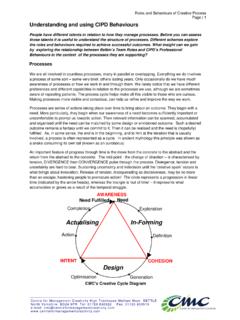Transcription of Leadership Styles - Arkansas State University
1 Leadership Styles By Kendra Cherry ================ In 1939, a group of researchers led by psychologist Kurt Lewin set out to identify different Styles of Leadership . While further research has identified more specific types of Leadership , this early study was very influential and established three major Leadership Styles . In the study, schoolchildren were assigned to one of three groups with an authoritarian, democratic or laissez-fair leader. The children were then led in an arts and crafts project while researchers observed the behavior of children in response to the different Styles of Leadership .
2 Authoritarian leaders, also known as autocratic leaders, provide clear expectations for what needs to be done, when it should be done, and how it should be done. There is also a clear division between the leader and the followers. Authoritarian leaders make decisions independently with little or no input from the rest of the group. Researchers found that decision-making was less creative under authoritarian Leadership . Lewin also found that it is more difficult to move from an authoritarian style to a democratic style than vice versa.
3 Abuse of this style is usually viewed as controlling, bossy, and dictatorial. Authoritarian Leadership is best applied to situations where there is little time for group decision-making or where the leader is the most knowledgeable member of the group. Participative Leadership (Democratic) Lewin s study found that participative Leadership , also known as democratic Leadership , is generally the most effective Leadership style. Democratic leaders offer guidance to group members, but they also participate in the group and allow input from other group members.
4 In Lewin s study, children in this group were less productive than the members of the authoritarian group, but their contributions were of a much higher quality. Participative leaders encourage group members to participate, but retain the final say over the decision-making process. Group members feel engaged in the process and are more motivated and creative . Delegative (Laissez-Faire) Leadership Researchers found that children under delegative Leadership , also known as laissez-fair Leadership , were the least productive of all three groups.
5 The children in this group also made more demands on the leader, showed little cooperation and were unable to work independently. Delegative leaders offer little or no guidance to group members and leave decision-making up to group members. While this style can be effective in situations where group members are highly qualified in an area of expertise, it often leads to poorly defined roles and a lack of motivation. Autocratic Leadership , also known as authoritarian Leadership , is a Leadership style characterized by individual control over all decisions and little input from group members.
6 Autocratic leaders typically make choices based on their own ideas and judgments and rarely accept advice from followers. Autocratic Leadership involves absolute, authoritarian control over a group. Characteristics of Autocratic Leadership Some of the primary characteristics of autocratic Leadership include: Little or no input from group members Leaders make the decisions Group leaders dictate all the work methods and processes Group members are rarely trusted with decisions or important tasks Benefits of Autocratic Leadership Autocratic Leadership can be beneficial in some instances, such as when decisions need to be made quickly without consulting with a large group of people.
7 Some projects require strong Leadership in order to get things accomplished quickly and efficiently. Have you ever worked with a group of students or co-workers on a project that got derailed by poor organization, a lack of Leadership , and an inability to set deadlines? If so, chances are that your grade or job performance suffered as a result. In such situations, a strong leader who utilizes an autocratic style can take charge of the group, assign tasks to different members, and establish solid deadlines for projects to be finished.
8 In situations that are particularly stressful, such as during military conflicts, group members may actually prefer an autocratic style. It allows members of the group to focus on performing specific tasks without worrying about making complex decisions. This also allows group members to become highly skilled at performing certain duties, which can be beneficial to the group. Downsides of Autocratic Leadership While autocratic Leadership can be beneficial at times, there are also many instances where this Leadership style can be problematic.
9 People who abuse an autocratic Leadership style are often viewed as bossy, controlling, and dictatorial, which can lead to resentment among group members. Because autocratic leaders make decisions without consulting the group, people in the group may dislike that they are unable to contribute ideas. Researchers have also found that autocratic Leadership often results in a lack of creative solutions to problems, which can ultimately hurt the performance of the group. While autocratic Leadership does have some potential pitfalls, leaders can learn to use elements of this style wisely.
10 For example, an autocratic style can be used effectively in situations where the leader is the most knowledgeable member of the group or has access to information that other members of the group do not. Democratic Leadership , also known as participative Leadership , is a type of Leadership style in which members of the group take a more participative role in the decision-making process. Researchers have found that this learning style is usually one of the most effective and lead to higher productivity, better contributions from group members, and increased group morale.










